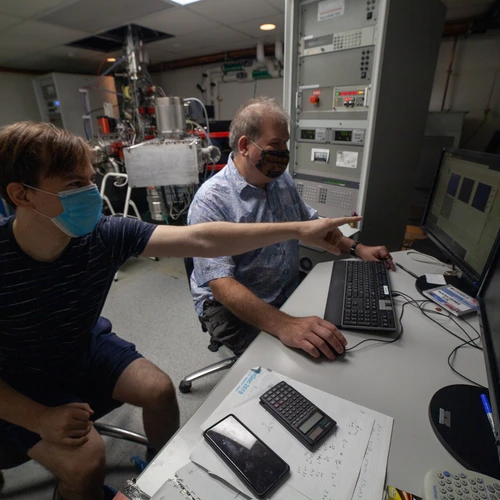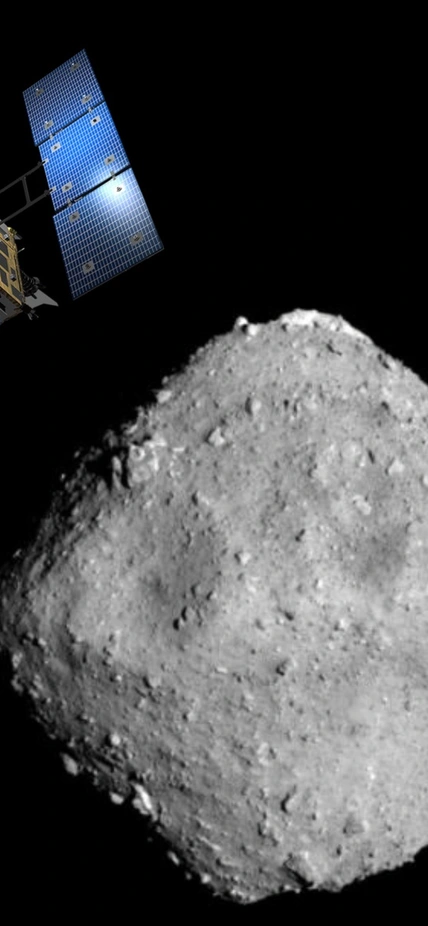Washington, DC— Microscopic grains of ancient material that predate our Sun’s birth were found in samples returned from the asteroid Ryugu by the Hayabusa2 mission, according to new work from an international team led by Carnegie’s Jens Barosch and Larry Nittler and published in The Astrophysical Journal Letters.
Named after a Japanese folktale, Ryugu is a near-Earth object shaped kind of like a spinning top that orbits the Sun every 16 months. Hayabusa2 was the first mission to bring material back to Earth from a primitive asteroid, offering unique insight into the chemical makeup of the building blocks from which our Solar System was formed.
“Different types of presolar grains originated from different types of stars and stellar processes, which we can identify from their isotopic signatures,” Barosch explained. Isotopes are versions of elements with the same number of protons, but a different number of neutrons.
He added: “The opportunity to identify and study these grains in the lab can help us understand the astrophysical phenomena that shaped our Solar System, as well as other cosmic objects.”
Each generation of stars seeds the raw material from which the next generation is born. Like a phoenix rising from the ashes, our Sun originated more than 4.5 billion years ago when a supernova explosion spewed material into a preexisting cloud of gas and dust, causing it to collapse in on itself. The remnants of this process formed a rotating disk of material around the baby Sun from which the planets and other objects coalesced—including the parent bodies that eventually crashed into each other and broke apart to become asteroids and meteorites.
The Hayabusa2 samples allow scientists to probe Ryugu’s makeup with sophisticated microanalytical instruments and compare it to material found in primitive meteorites called carbonaceous chondrites that have crashed to Earth.
The team detected all the previously known types of presolar grains—including one surprise, a silicate that is easily destroyed by chemical processing that is expected to have occurred on the asteroid’s parent body. It was found in a less-chemically-altered fragment that likely shielded it from such activity.
“The compositions and abundances of the presolar grains we found in the Ryugu samples are similar to what we’ve previously found in carbonaceous chondrites,” explained Nittler, who undertook this work at Carnegie, but recently moved to Arizona State University. “This gives us a more complete picture of our Solar System’s formative processes that can inform models and future experiments on Hayabusa2 samples, as well as other meteorites.”
Other Carnegie co-authors include Jianhua Wang, Conel Alexander, Richard Carlson, and George Cody.

Out of This World
Jens Barosch and Larry Nittler analyzing the Ryugu sample at Carnegie’s Earth and Planets Laboratory campus in Washington, D.C.
“The opportunity to identify and study these grains in the lab can help us understand the astrophysical phenomena that shaped our Solar System, as well as other cosmic objects," Barosch said.
Image is courtesy of Katy Cain/Carnegie Institution for Science.
Acknowledgments
This work was carried out under the auspices of the Hayabusa2 Initial Analysis Team, specifically the Chemistry sub-team led by Prof. H. Yurimoto and the Macromolecule sub-team led by Prof. H. Yabuta. This work was funded in part by NASA.
